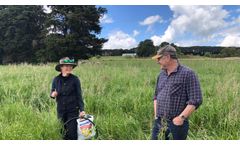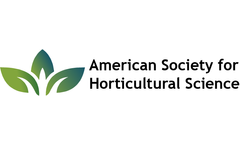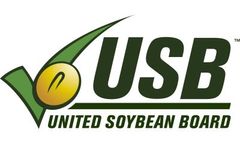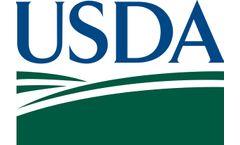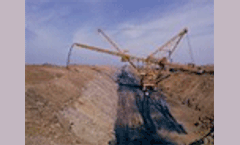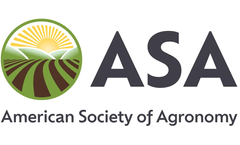Tillage Practices Articles & Analysis
21 news found
The projects have included trials based on regenerative agriculture practices to demonstrate how increasing soil biology and adopting minimum or appropriate tillage methods and changing from monoculture pasture species to multi-species can improve soil, animal, pasture and human health. ...
Grão Direto, the largest digital platform for grain trading in Latin America, developed in collaboration with Bayer the introduction of the “Sustainable Practices Badge” on its digital marketplace. The badge indicates which farmers on the platform are utilizing agronomic practices that are more beneficial to the environment. ...
ByBayer AG
Apart from that, rapeseed is the earliest vacating leaf crop, thus allowing sufficient time for thorough soil tillage and adequate preparation of the seed bed for the subsequent crop. ...
Check out these exciting new features in the latest AgFiniti release - available now! AgFiniti: Simplified User Experience The next time you log in you are going to notice a simplified user interface when viewing your maps. The Stats and Legend panel have been combined giving you a larger map viewing area while making it easier to customize what data you are looking at and analyze your field ...
However, there are several good practices for controlling it such as crop rotation, choosing a variety with some resistance, applying fungicides in a timely manner and tillage practices. ...
As interest in organic agricultural and horticultural practices continues to grow, so does the need to identify alternative weed control practices. Mulching, a common practice used to control weeds and reduce the need for tillage, can also reduce insect pollinators' exposure to harmful pesticides; however, finding the right mulch ...
“We not only recommend the optimal use of certain herbicides, but we also strongly support the adoption of integrated weed management practices that include the best crop rotations, soil tillage practices and crop planting ...
Visitors to the IQhub can immerse themselves in the history -- and related innovation -- of tillage practices over the years, explore the way water moves through soil, imagine what the world will look like with a population of more than 9 billion people in 2050 and even get hands-on in a cutting-edge tractor simulator. ...
In a new Focus on Soybean webcast, Catchot outlines best-management practices to treat pests common to the region. “There’s no substitute for scouting a field,” he says. ...
The three management systems were: 1.) Conventional: tillage takes place just before sowing, when the soil is not flooded; 2.) Pre-germinated: fields are flooded before the conventional tillage operations start. Tillage takes place and pre-germinated seeds are used; 3.) No tillage: the soil preparation is done around two months ...
In particular, his team found that total N2O emissions were not significantly affected by tillage practices when expressed on an area basis. When they were calculated per unit yield of grain, however, emissions were significantly greater under no-tillage than conventional tillage. ...
With transition on the rise, it is necessary for these farmers to have effective and economical organic management practices. A research team led by scientists from Penn State University and University of New Hampshire conducted a four-year study examining the impact of reduced-tillage and cover crops managed for hay and forage production on the agronomic and ...
Corn was planted as a cover crop and chicken manure was applied in either a pelletized form or a raw litter form. Reduced tillage and no tillage treatments were also employed. Samples of surface runoff were collected after 10 rain storms during the 2008 summer growing season from April through July. Sudarshan Dutta, the author of the study, found that the ...
Although tillage is another expense for farmers and generally increases the risk of soil erosion, a one-time tillage may be performed to correct some problem, such as a perennial weed problem. ...
Expanding on existing conservation practices, a team of scientists has tested whether compost filters socks in grassed waterways would reduce sediment flow and retain dissolved chemicals in runoff. ...
Cover crops may be more effective at reducing soil erosion and runoff after maize harvest than rough tillage, according to scientists from the Université Catholique de Louvain, in collaboration with the Independent Center for the Promotion of Forage (CIPF). ...
They varied strongly depending on the type of soil tillage used. For example, the number of earthworms per square metre varied between 119 in ploughed land and 160 in land treated with the disc harrow. ...
Agricultural Research Service (ARS) scientists and cooperators have shown that with careful management, this practice does not result in any more soil erosion than other postharvest practices. ...
However, recent studies show that the effect of no-till on carbon sequestration can be variable depending on soil and climatic conditions, and nutrient management practices. Researchers at Agriculture and Agri-Food Canada (Québec City) investigated the impacts of tillage (no-till vs. moldboard plowing) and N and P fertilization on carbon storage in a clay loam ...
For peanut crops, however, reduced tillage has not gained a large acceptance as a viable practice, as findings of inconsistent yields have not encouraged farmers to make a switch from conventional tillage systems. ...

